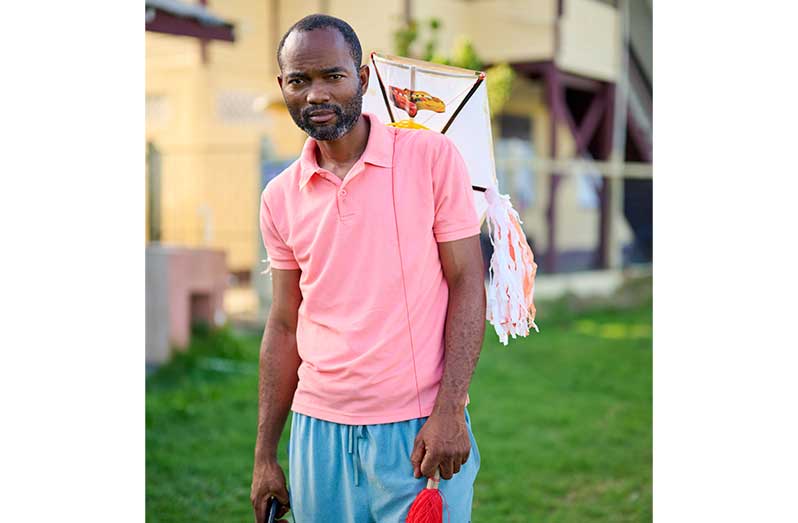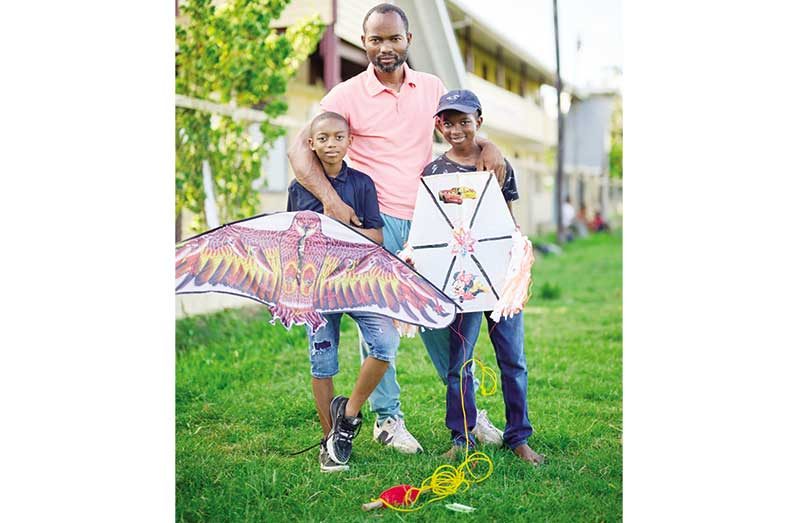Preserving the traditions of faith and family at Easter
For the older generation, Easter in Guyana has always meant kite flying, fun, and hot cross buns—and for most of us, it is a time for family. It’s a season when families gather with handmade kites, while parents share childhood stories and children craft their own. For others, Easter means egg hunts and various other activities. For Horaytus Demattos and his family, Easter traditions are more than just a seasonal pastime—they are a celebration of identity, faith, and family.
Sitting down with Pepperpot Magazine in their community of Mocha-Arcadia, Horaytus Demattos shared that Easter is much more than just a holiday. For Horaytus, it is the time of year he cherished most as a child, one in which he formed some of his best memories. Today, he aims to pass those experiences on to his children through one of the most original traditions of all—the art and importance of authentic kite making.
The Demattos family begins their Easter celebrations well before the holiday itself, with kites either being made or bought from local kite makers and artisans in their community. Although today’s kites are not entirely different from those made years ago, Horaytus notes that some traditions in kite-making have shifted. During his childhood, Easter was about resourcefulness and reverence.

Kites were never purchased; they were born from creativity—crafted with pages from schoolbooks, natural paste, and tails made from old clothes. “We made our kites from scratch. You tear the book page, make the tail, and do everything. I remember getting some lashes for tearing out the exercise leaves from my school book to make the caddy old punch. Some clothes were damaged in the process, too, to make the cloth tails,” Horaytus shared.
One part of the family’s Easter tradition that has remained unchanged is the location where they fly their kites. The family still heads to the Mocha Primary School compound, the same school Horaytus attended more than two decades ago and where his son recently graduated. “This ground here is where I really laboured intensively to put up a kite,” he said.
That space holds deep personal meaning for Horaytus. It was there, as a boy, that he discovered the true joy of Easter—not through store-bought kites or organised events, but through the careful, and sometimes chaotic, process of building his own. He emphasised how kite-flying becomes more meaningful when the kite is one you’ve created yourself. “It feels better when you’ve made the stuff. You can put on initials, your children’s names, or something special. It’s a lot more significant than just going to purchase,” he shared.
Beyond paper, tail, and string, Easter also holds profound religious significance for the Demattos family. Horaytus emphasised the deeper meaning of the season, stating that “Easter for me, growing up in a religious home, was mostly about the death, burial, and resurrection of Christ. The main thing about Easter is really to celebrate the death, the burial, and resurrection of Jesus Christ. It’s a time of introspection, the way you think about yourself and what Christ did for us,” he said. Horaytus hopes to carry on and incorporate this same faith-based approach into the lives of his children and family, ensuring that the spiritual essence of Easter remains at the forefront.
However, newer customs and modern forms of celebration have made their way into traditional Easter observances. Reflecting on the difference between the past and present, Horaytus expressed concern that the spiritual focus is beginning to fade in today’s society. “What I see happening is sometimes persons are forgetting the religious aspect,” he added. “They got hat shows now on Easter. Those are all things that are coming in now. In our time, it was just making kites, and that was it.”
Still, despite changing times, he remains hopeful that some traditions will endure and that Easter celebrations will continue to blend joyful play with spiritual reflection. For Horaytus, watching his children take part in the same customs he once enjoyed brings a sense of fulfilment. He sees in them the same excitement he once felt—the thrill of a kite catching the wind, the pride in building something by hand, and the understanding of what the season truly means.
Though today’s children are drawn to gadgets and modern entertainment, he believes there is still space for tradition to thrive. Horaytus offered a few words of caution and care, urging, “Please be safe. Remember the rules. Don’t fly next to electrical wires.” Horaytus and his sons are a beautiful reminder that some traditions—no matter how they evolve—remain deeply connected to the things that matter most: family, faith, and the beauty of creating something with your own hands.



.jpg)








